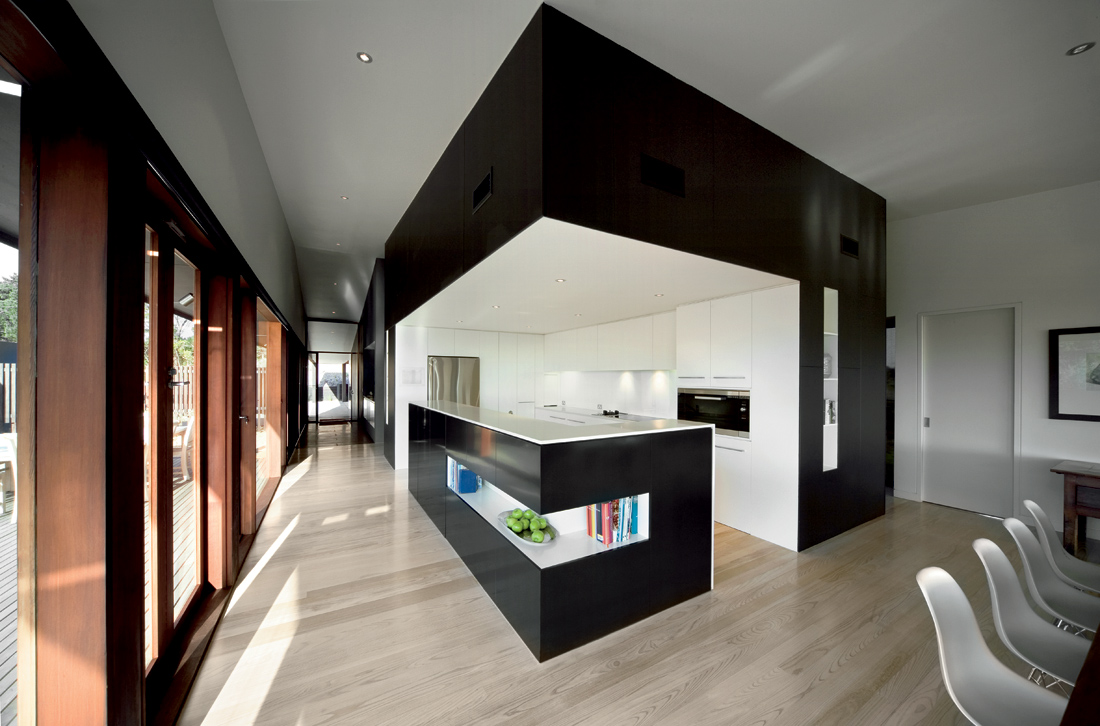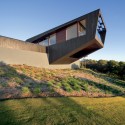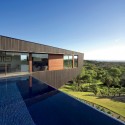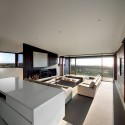
Designed by Jackson Clements Burrows Pty Ltd Architects. This Cape Schanck House is located on a high inland dune amongst dense coastal ti-tree shrub with expansive western views, Victoria, Australia. This cape Schanck House is orientated to the northwest embracing expansive views. To control passive heating in summer, the western windows are protected by extensive eaves and motorised external Vental louvre blinds automatically descend once the sun passes through the north axis.
The undulating landscape at Cape Schanck is primarily a combination of cleared grass dunes (locally known as the Cups region) and expansive areas of dense Coastal Heath and Ti-tree shrub. The site is a designated wildfire zone and prior to the landscape being significantly cleared by early European farmers the area was inhabited by local aborigines.
On our first site visit we discovered the remnants of a hollowed out burnt log. This informed a starting point for an architectural exploration for the interiors and exterior where the form of the hollowed log suggested possibilities for an architectural solution.


Architects: Jackson Clements Burrows Pty Ltd Architects
Location: Cape Schanck, Victoria, Australia
Project Team: Tim Jackson, Jon Clements, Graham Burrows, Kim Stapleton, George Fortey, Brett Nixon
Design duration: 12 months
Construction duration: 18 months
Landscape: Site Office Landscape Architects
Mechanical: Griepink & Ward Pty Ltd
Structural: Adams Consulting Engineers Pty Ltd
Contractor: BD Projects
Constructed Area: 400 sqm
Photographs: John Gollings



This house engages with the landscape through manipulation of form, material and colour. The weathered black vertical cladding profile references the undercroft structure of the Ti-tree and upper level form extends from the hill at ground level rising to a ridge which then descends to the west. At distance, the cranked profile of the form responds to the undulating profile of the surrounding ti-tree scrub and immerses the building within its surrounds.
No comments:
Post a Comment